In order to be discovered, Java migrations should go under src/main/java with the package db.migration

e.g.
package db.migration; // <-- classpath:db/migration
import org.flywaydb.core.api.migration.jdbc.JdbcMigration;
import java.sql.Connection;
public class V3__SampleJava_script implements JdbcMigration {
public void migrate(Connection connection) throws Exception {
// your code...
}
}
Difficult to diagnose without seeing your pom.xml and how your jar is packaged but given the folder structure of your target directory above, perhaps either the V3__SampleJava_script.class is added to the jar under classpath:resources/db/migration or is just not included at all.
To check, try unzipping the jar file:
jar -xf flyway-database-migration.jar
or just listing the contents:
jar -tf flyway-database-migration.jar
It is also worth noting that if you have overridden the locations setting with a filesystem: path, the documentation states that the directory "may only contain sql migrations", any java migrations will just be ignored.
Update 2018-06-03
Given that the flyway-database-migration.jar is being pointed to a filesystem: location, only sql migrations will be discovered, not java ones. The database-migration-scripts directory needs to be added to the classpath and the flyway location set to classpath:db/migration.
java -cp C:\database-migration-scripts;<existing classpath> ...
Update 2018-06-09
Because of the way that the flyway-database-migrations.jar is packaged, using the Spring Boot Executable Jar format, all the application dependencies are placed in the BOOT-INF/lib directory inside the executable jar and are loaded by a separate classloader from the org.springframework.boot.loader.JarLauncher main class. So, contrary to the above, I'm not sure if it's possible to pass additional classpath entries to the application using the -cp command line option. I think you would need to remove spring boot and package it as a regular jar file. I certainly encountered class visibility issues and decided to try a different approach.
I downloaded the Flyway Command Line Runner and updated the <RUNNER_DIR>/conf/flyway.conf settings with the following:
flyway.url=jdbc:mariadb://localhost:3306/flyway?createDatabaseIfNotExist=true
flyway.user=root
flyway.password=yourPassword
flyway.locations=classpath:db/migration
I created a directory under <RUNNER_DIR>/jars/ called database-migration-scripts.jar with the following structure (the .jar is important as Flyway will only add files or directories with this suffix to the classpath):
database-migration-scripts.jar/
└── db
└── migration
├── V1__m1.sql
├── V2__m2.sql
└── V3__SampleJava_script.class
Finally, I added all of the runtime dependencies for the database-migration-scripts project to <RUNNER_DIR>/lib:
lib/
├── animal-sniffer-annotations-1.14.jar
├── checker-compat-qual-2.0.0.jar
├── checker-qual-2.3.0.jar
├── error_prone_annotations-2.1.3.jar
├── flyway-commandline-5.1.1.jar
├── flyway-core-5.1.1.jar
├── guava-23.6-jre.jar
├── j2objc-annotations-1.1.jar
├── jcl-over-slf4j-1.7.25.jar
├── jsr305-1.3.9.jar
├── jul-to-slf4j-1.7.25.jar
├── log4j-over-slf4j-1.7.25.jar
├── logback-classic-1.1.11.jar
├── logback-core-1.1.11.jar
├── slf4j-api-1.7.25.jar
├── snakeyaml-1.17.jar
├── spring-aop-4.3.13.RELEASE.jar
├── spring-beans-4.3.13.RELEASE.jar
├── spring-boot-1.5.9.RELEASE.jar
├── spring-boot-autoconfigure-1.5.9.RELEASE.jar
├── spring-boot-starter-1.5.9.RELEASE.jar
├── spring-boot-starter-jdbc-1.5.9.RELEASE.jar
├── spring-boot-starter-logging-1.5.9.RELEASE.jar
├── spring-context-4.3.13.RELEASE.jar
├── spring-core-4.3.13.RELEASE.jar
├── spring-expression-4.3.13.RELEASE.jar
├── spring-jdbc-4.3.13.RELEASE.jar
├── spring-tx-4.3.13.RELEASE.jar
├── tomcat-jdbc-8.5.23.jar
└── tomcat-juli-8.5.23.jar
After that I was able to successfully run:
./flyway migrate
And was able to verify that both sql and java migrations had been successfully applied:
./flyway info
+-----------+---------+-------------------+-------------+---------------------+---------+
| Category | Version | Description | Type | Installed On | State |
+-----------+---------+-------------------+-------------+---------------------+---------+
| Versioned | 1 | m1 | SQL | 2018-06-09 07:41:57 | Success |
| Versioned | 2 | m2 | SQL | 2018-06-09 07:41:57 | Success |
| Versioned | 3 | SampleJava script | SPRING_JDBC | 2018-06-09 07:47:56 | Success |
+-----------+---------+-------------------+-------------+---------------------+---------+
Phew! This is much harder work than packaging the migrations with the application, in my opinion.
One of the other downsides of this approach is that if someone adds a new java migration with an additional dependency (e.g. commons-lang3, or whatever else) that dependency needs to be added to the <RUNNER_DIR>/lib directory as well.
Hope this helps!
